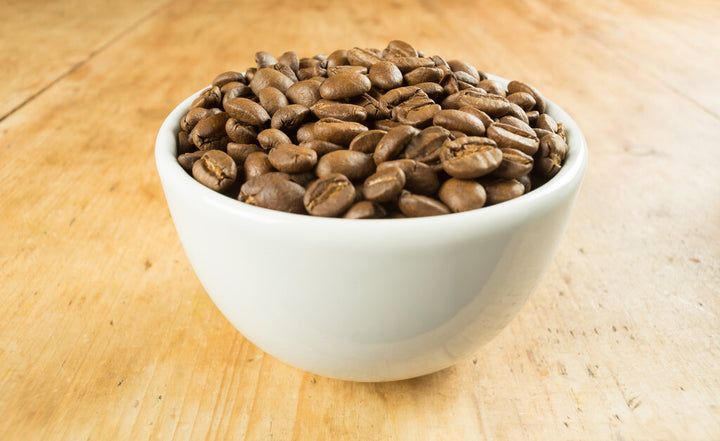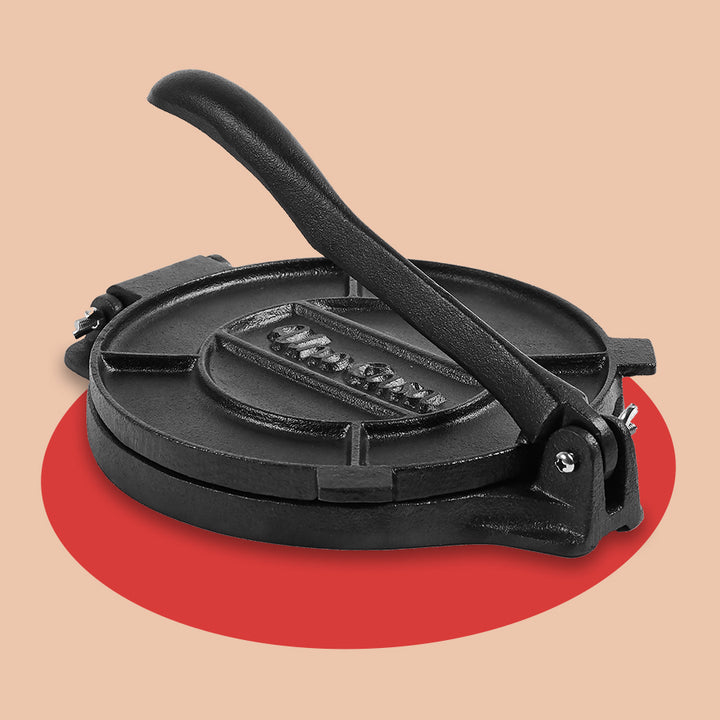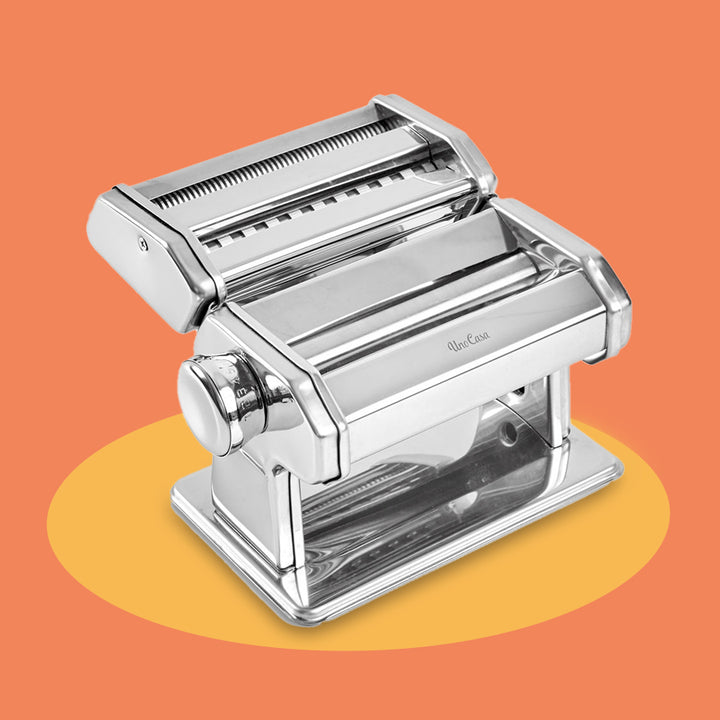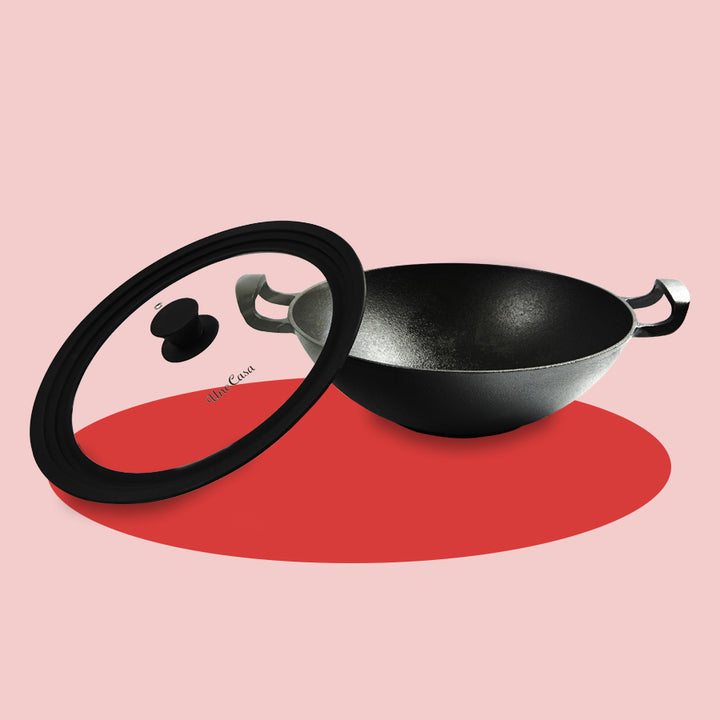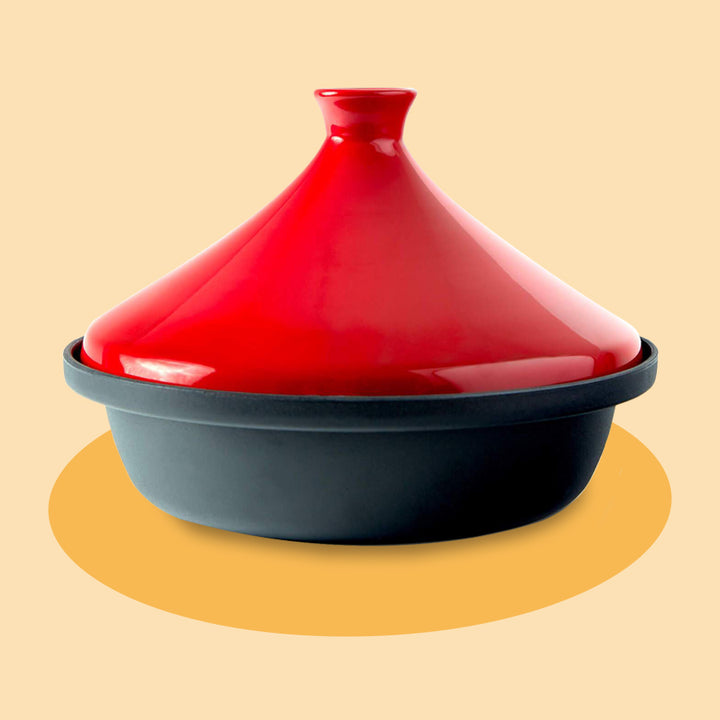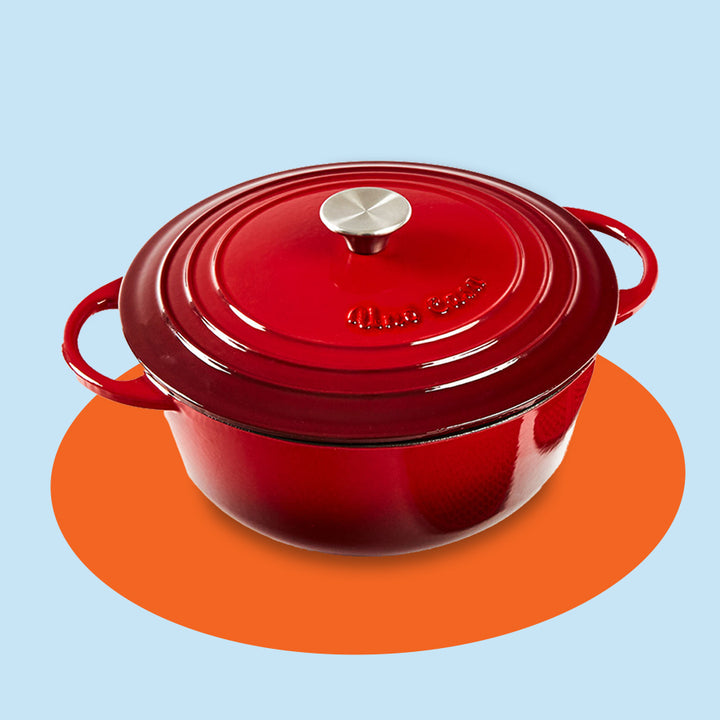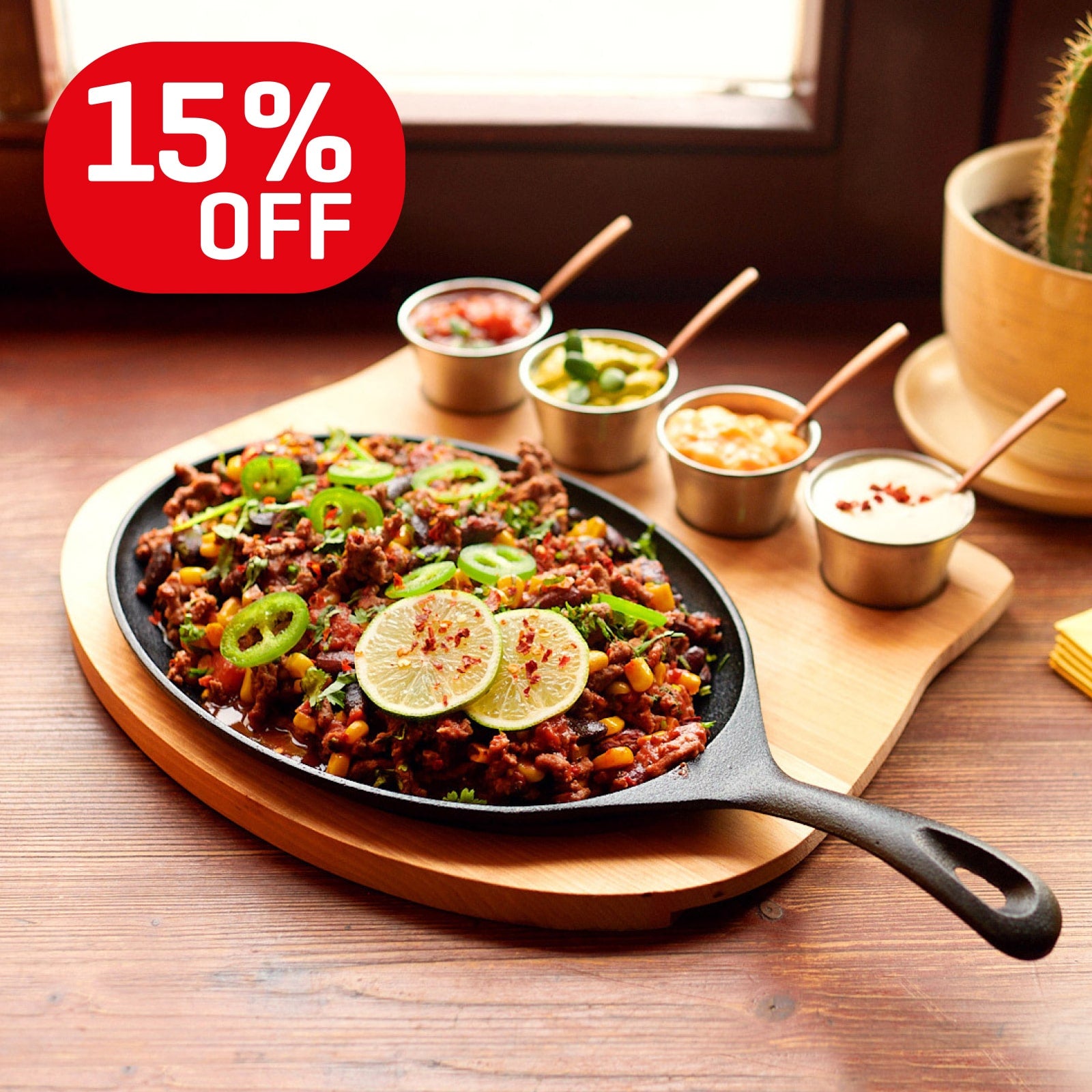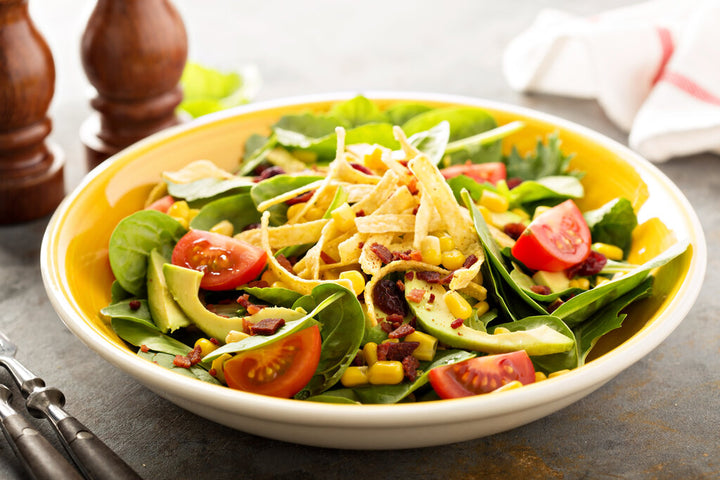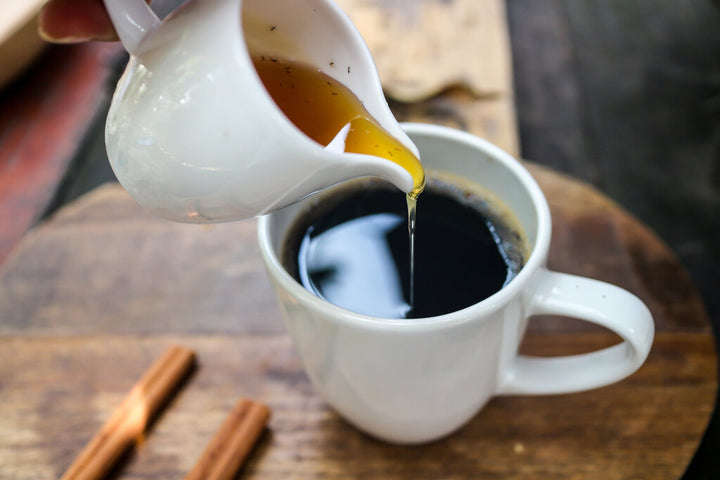How to Grind Coffee Beans For Every Brew

From pour-over to French press, every brew method needs a different coffee grind texture for the perfect cup. Keep reading to choose the right grinder, create a flawless consistency, and even learn how to grind coffee beans at home.
Why grind your coffee beans?
Coffee beans are roasted, then ground to help brew strong flavor into every cup. During the brewing process, hot water extracts soluble materials from the beans like acid, sugar, caffeine, carbs, and lipids. By grinding your beans to the perfect texture, you'll create a well-balanced cup of joe.
Consistency matters
Your grinds' ideal texture depends on the brewing method you use, as you don't want your hot water filtering through the grinds too slowly for an extra bitter, intense cup or too quickly, resulting in a weak brew.
We'll explain below which brew methods need which grind textures, but no matter which one you use, you'll want your coffee beans ground into consistent pieces. The water won't evenly filter if you mix large chunks of coffee beans with tiny pieces, leaving you with an uneven brew.
Pre-ground coffee vs. whole bean coffee
Which is better - pre-ground coffee or whole bean? Once we roast whole coffee beans, they slowly lose their freshness as the inside of the beans are exposed to air, eventually becoming stale. That means coffee beans you order from the processing facility aren't as fresh as the ones you grind at home.
Enjoy the most flavor from your coffee beans by grinding them shortly before brewing. If you're a dedicated coffee drinker like me, it's worthwhile to buy your beans whole and invest in a relatively inexpensive, good-quality bean grinder.
We recommend roasting your beans within 30 days of buying and consuming within 2 weeks of grinding.
How to Grind Coffee Beans
To grind beans at home, you’ll need a coffee grinder. The two most common options are the blade grinder and the burr grinder – and though both will get the job done, there’s one clear winner.
Coffee grinder comparison: Blade vs. burr grinders
One of the keys to finding just the right grind lies in the consistency: does your grinder break your beans down into even, consistent sizes, or are they all over the place?
A burr grinder is by far the very best coffee grinder type on the market, though it’s usually priced as such and can set you back quite a bit of cash.
Whether you choose a flat or conical burr grinder, you’ll end up with a very consistent bean grind. Conical burr grinders work by pushing coffee beans between two flat rings and chewing through them, with the grinds falling through the burrs only as they reach the desired size – this cuts down on the too big and too small bits in your brewer.
While flat grinders do a great job, some pieces may become stuck in the grooves, which can negatively affect your grind results. Another nice thing about burr grinders is you don’t need to worry how long to grind coffee beans. When the grinding finishes, the beans will all be in the receptacle at the bottom.
A blade grinder is often the best choice for an amateur coffee fan who is looking more for affordability than enjoying the subtleties of the best-tasting cup. The blade grinder won’t grind your beans perfectly, but they will give you freshly-ground beans, which goes a long way to improving coffee’s taste compared to pre-ground beans.
Coffee grinds: Why does size matter?
Another downside to pre-ground coffee is there aren’t many grind size options. And as you’ll see in our coffee grind chart below, size matters when it comes to coffee grinds!
Coffee beans have mostly insoluble compounds that should be extracted in a particular way to produce a satisfying cup. You need the proper coffee-to-water ratio, water temperature, and best brew time, along with the right grind.
How grind size affects extraction and flavor
Grind size matters because different sizes change the total surface area of the beans. The finer the coffee grind, the more surface area exposed – the more extensive surface area is best to extract all of the essential oils and flavors from the coffee bean during quicker brew methods.
In contrast, slow brew methods need less surface area to avoid over-extracting your beans. The bottom line is, if you pour water through a pile of rocks, it will flow down almost immediately, while running water through sand provides more resistance – the water takes longer to flow to the bottom.
Under-extraction happens when your grinds are too coarse for your brew method, making coffee taste highly acidic and sour.
Over-extraction occurs when your grinds are too delicate for your brew method, making a cup of bitter, dark coffee with all subtle undertones lost.
Coffee grind chart
Now that you know why coffee grind size matters, how will you know when to use a coarse ground coffee, medium-coarse grind, or medium-fine ground coffee? And what do those even look like?
Take a look at our handy coffee grind chart so you can easily recognize all the primary coffee grind sizes.
- Extra-coarse grind. 1.5 mm in size, this consistency looks like coarse rock salt.
- Coarse grind. 1 mm in size, this texture looks like coarse sea salt.
- Medium grind. 0.75 mm in size, this bean grind looks like grains of beach sand.
- Medium-fine grind. 0.5 mm in size, this texture looks like fine table salt.
- Fine grind. 0.3 mm in size, this consistency looks like fine, granulated sugar.
- Superfine grind. 0.1 mm in size, this coffee grind resembles flour.
Grinding coffee beans according to brew method
No matter how you use to make your coffee grinds at home, we've got you covered! Find which one of coffee brewing methods works the best for different types of coffee grind, then use a grinder above or choose an alternative coffee bean grinder method below.
Grind: Extra-coarse
Texture: Coarsely ground black pepper
- French Press
The French press uses an immersion brew method in which the grounds make direct contact with boiling water before being pressed through a mesh screen. Because of the prolonged direct contact and the larger holes in the mesh, using a French press grind works best to keep the sludge and grinds in the press instead of your cup.
- Cold-Brew
Cold-brew coffee brews at room temperature or colder, requiring a longer brew time. Stick to extra-coarse grinds to ensure you don't over-extract them throughout the long brewing time.
Bean Grind: Coarse
Texture: Coarse sea salt
- Automatic Drip Coffee Maker
Most coffee makers are simple, fully automated, pour-over drip brewers. The hot water moves through the beans in the filter at a medium rate of flow, which requires a medium to coarse grind.
Bean Grind: Medium-coarse
Texture: Table salt
- Manual Pour-Over
When you're making coffee with a pour-over coffee maker and a gooseneck kettle, you'll want a medium grind to ensure the flow rate is spot on. The manual drip method requires a slightly finer grind than a drip coffee maker, as the brewer pours the water a little quicker than the machine.
Bean Grind: Medium
Texture: Table salt
- Aeropress
The Aeropress brews faster than a pour-over, but this method uses extra pressure to help speed up the extraction process. Use a medium grind, just as you would for a pour-over grind.
Bean Grind: Fine
Texture: Ground cinnamon spice
- Espresso
Espresso beans are a very fine texture for the steam extraction process. Avoid making it too fine and powdery. Otherwise, the water will flow through channels in the grinds instead of saturating all of them.
Bean Grind: Extra-fine
Texture: White flour
- Turkish Coffee
Turkish coffee is ready lightning-fast. Grind your beans extra-fine to perfectly extract the grinds as you brew.
How to grind coffee without grinder blades
Learn just how easy it is to grind coffee beans at home! You likely have a few simple tools kicking around the house that you can turn into a homemade grinder.
Option #1: Mortar and pestle
A mortar and pestle grind herbs and spices just fine, so why not use it for your coffee, too? The hammer and rolling motions help create a fairly consistent texture.
Directions
- Fill your mortar with coffee beans. How many coffee beans to grind will depend on how much you're brewing, but start with a few small scoops and, for best results, fill it no more than ¼ full.
- Hold the pestle in one hand and the mortar in the other.
- Forcibly press the pestle down on the coffee beans with a crushing, twisting motion. Use the pestle to roll the ground coffee in the mortar to check for consistency.
Option #2: Blender
Can you grind coffee beans in a blender? Absolutely! The blender chops coffee beans much in the way a blade grinder would. Beware that just like a real blade grinder, a blender won't give you consistent grinds.
Some high-end blenders include a grinding speed setting meant for the task! Stick to blending the beans in quick bursts rather than continuously running the blender to avoid heating the beans' oils, making an extra-bitter cup.
Directions
- Place your coffee beans in your blender's base and secure the lid.
- Use the grinder setting if your blender has one to process the beans. If not, use medium-high speed to pulse your beans to your desired texture.
- Tilt your blender from side to side as you grind to keep the larger beans close to the blade, evening out the grind.
Option #3: Rolling pin
A rolling pin isn't just meant for pie - you can use it to crush your coffee beans in a pinch. You can closely control the pressure on your beans, which means your grinds should end up with a fairly even texture. Get ready to sweat as you crush those firm beans and learn how to grind coffee beans without a grinder.
Directions
- Place some coffee beans in a zippered freezer bag or between two sheets of parchment paper, folding up the edges.
- Lay the bag (or paper) flat on the counter.
- Use your rolling pin to crush your beans by pressing down.
- Once crushed, start rolling the pin over the beans with lots of pressure until you reach your desired consistency.
Option #4: Knife
Grind your beans with the flat side of a kitchen knife's blade, not the sharp edge. Most butcher or chef's knives work well, as they have a broad, stiff blade with plenty of contact area and leverage to crush the beans quickly.
This method can be a little tricky, but it offers plenty of control over the grind.
Directions
- Place your coffee beans on a large cutting board.
- Place your knife's side on top of the beans, with the blade's sharp edge facing away from you. You can place a towel over the knife to prevent beans from flying as you work.
- Place a flat palm on top of the blade, and press down to crush the beans.
- Once the beans break, continue pressing down on the edge, pulling it slightly towards you for a finer grind.
Option #5: Food processor
The food processor works much like the blender, so it won't be giving you winning consistency, but it will certainly work in a coffee emergency!
Directions
- Pour your coffee beans into the processor and secure the lid.
- Use a quick pulse technique as you run the processor - short bursts only.
- If you're able to tilt your processor as it runs, move it from side to side as you work to even out the grind.
Now you know how to grind coffee beans without a grinder and can easily start grinding coffee beans at home!
Final notes on coffee grinding
We let you skip the confusing guesswork by picking the perfect coffee bean for your brewing pleasure. We've even helped you pick the easiest brewing methods.
Get peak freshness out of your favorite coffee beans by roasting and grinding them at home, and lucky for you, you don't have to have a kitchen appliance just for coffee grinding!
Whether you go all-out and invest in fancy coffee gadgets, or use an inexpensive grinder and coffee maker, the most crucial aspect to a cup of coffee that tastes good is its freshness – try to grind your coffee at home as much as you can!
Leave a comment
Comments will be approved before showing up.
Also in Tips
